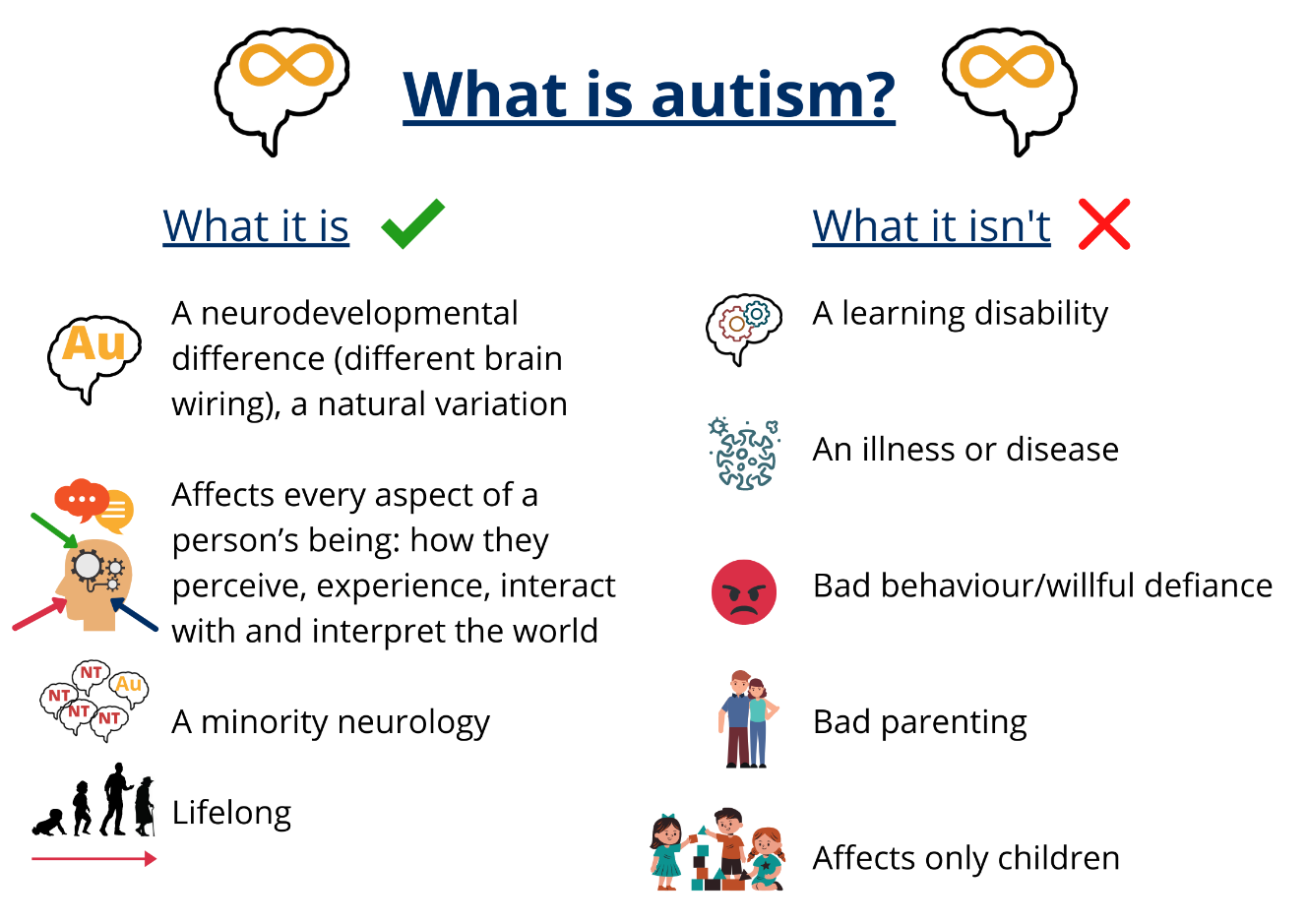What Are The Types Of Autism?
Comprehending the different sorts of autism problems is a necessary action in locating the correct assistance and treatment on your own or your liked one. Signs have the best opportunity of being well-managed with the help of on-line therapists and doctors to direct you. Autism range problem incorporates a series of conditions, each with special attributes.
Autism Range: Exploring Its Influence On Culture And Understanding
:max_bytes(150000):strip_icc()/what-is-severe-autism-260044-Final-1624a05bc38f43faa1b2d3e0e42f8d3d.png)
- By identifying mental health disorders as handicaps, we can cultivate empathy and support those that face them.While there might be overlapping features, Rett Syndrome is no more taken into consideration a kind of autism.In DSM-IV, autism was categorized right into different diagnoses, including autistic disorder, Asperger's syndrome, and prevalent developing disorder not otherwise specified (PDD-NOS).While each special needs presents its challenges, several impairments combine 2 or more impairments, considerably impacting an individual's capacity to do everyday activities.

Autism Vs Antisocial Individuality Disorder: Vital Distinctions And Resemblances
If your physician believes your youngster may have ASD, she or he might refer you to an expert, such as a developing pediatrician, child psychoanalyst or psycho therapist, or neuropsychologist. Individuals with ASD might likewise have other Temple Grandin issues, such as speech and language problems, rest problems, and seizures. They might likewise have attention deficit disorder (ADHD), clinical depression, or anxiety. Rett Disorder is an uncommon neurological condition nearly exclusively affecting girls, normally emerging in between 6 and 18 months old.
However, they might deal with substantial obstacles in social communications and interaction. Individuals with Asperger's Disorder have a tendency to have intense focus and passion in details subjects, commonly presenting comprehensive understanding in those areas. It is essential to keep in mind that Asperger's Syndrome is no longer recognized as a different medical diagnosis in the current version of the Diagnostic and Statistical Handbook of Mental Illness (DSM-5). Your youngster might experience hold-ups in language advancement, walking, and various other electric motor abilities.Childhood Years Disintegrative Condition (CDD) is the rarest and most serious form of autism spectrum problem. Youngsters with CDD originally establish normally, getting to common developing milestones in areas such as social abilities, communication, and language. However, between the ages of 2 and 4, they experience a quick loss of these acquired abilities.
Role-playing circumstances aid build self-confidence when engaging with peers or grownups. This training is especially valuable for those with Asperger's Syndrome that prefer social links but discover it challenging to navigate them effectively. Applied Habits Analysis (ABA) is one widely-used technique that stresses favorable support to motivate desired habits while minimizing unwanted ones. This technique can be specifically effective for those with Autistic Disorder who may battle substantially with interaction. However, these qualities weren't considered serious enough for a diagnosis of timeless autism.
Prior to the DSM-5, autism was typically called encompassing 5 unique disorders. Recognizing these historical groups can offer a more nuanced sight of the autism spectrum. To conclude, although these are the five major types of Autism, the actual listing is much more comprehensive. You can recognize this type of autism by observing the youngster and noting what area the youngster shows a shortage in, such as interacting with others. PDD-NOS is sometimes referred to as "subthreshold autism," as it is a term made use of to define a person that has some yet not all signs of autism. The concept of an autism spectrum represents a standard shift in exactly how we view and come close to autism. As opposed to unique categories, autism is currently recognized as a continuum of neurodevelopmental problems. This spectrum design recognizes the large variability in signs and intensity amongst people with autism.